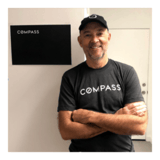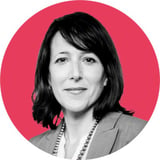Summary
Jason will share the latest of his work over the past decade developing visual frameworks for design teams, leaders and designers to map their skills and define their future professional development. Through his role as a team leader, and with workshops he runs with the community and his clients, he has seen how valuable it is for designers to self-reflect on who they are, and project the areas in which they feel like they should develop. Whether that’s within, or beyond the context of the organization in which they work.
Key Insights
-
•
Traditional spreadsheets for profiling designers are time-consuming and hard to maintain.
-
•
Visual tools like career timelines and blog mapping foster richer conversations and deeper insight.
-
•
Soft skills such as empathy across stakeholders and human relationships outweigh technical skills in design.
-
•
Collaboration with recruitment firms led to the creation of a simple UX spectrum tool for self-assessment.
-
•
Designers often struggle with distinguishing roles like UI, UX, product, and service design semantically.
-
•
Using playful exercises with skittles and charts reduces personal bias and makes self-reflection more engaging.
-
•
Peer mentoring and shadowing are preferred developmental methods over formal training or conferences.
-
•
Teams can visually map skill strengths, gaps, and desires for growth to align development efforts.
-
•
Designers rarely self-reflect yet find value when using visual and interactive tools to do so.
-
•
Emotional sensitivity in reflective exercises requires careful facilitation to avoid unintended harm.
Notable Quotes
"Spreadsheets for profiling people across an organization can take an awful long time to create and update."
"The important thing was the conversation around the visual maps, not the size or scale of areas."
"People often debate internally about whether they lean more towards product, service, or design artifacts."
"Empathy is not just for users but also vital for stakeholders, developers, and colleagues."
"Using skittles to map skills made it less personal but more fun and engaging for designers."
"Development requests were often pragmatic—shadowing, mentoring, and reviewing—not big training courses."
"Many designers feel overwhelmed by hundreds of expected skills, which creates paralysis about where to focus."
"Organizations don’t always need external training; they can facilitate internal learning and mentorship."
"Designers rarely take the time to self-reflect, but visual tools help engage them in the process."
"This kind of reflective work can turn into therapy, so we have to be careful how we facilitate it."
Or choose a question:
















More Videos

"Can you show me your process, not just your portfolio? That shows me your real design thinking."
Adam Cutler Karen Pascoe Ian Swinson Susan WorthmanDiscussion
June 8, 2016

"If you’re doing a lot of work that’s not in your job description, you might actually be doing leadership."
Peter MerholzThe Trials and Tribulations of Directors of UX (Videoconference)
July 13, 2023

"In the automotive industry, most safety standards only became mandatory after governments intervened."
Lisa WelchmanCleaning Up Our Mess: Digital Governance for Designers
June 14, 2018

"Every small action contributes to a larger impact in the fight against climate change."
Vincent BrathwaiteOpener: Past, Present, and Future—Closing the Racial Divide in Design Teams
October 22, 2020

"Design your processes around learning, have blameless post mortems and celebrate failures especially."
Brenna FallonLearning Over Outcomes
October 24, 2019

"Working from home during the pandemic is hard because it’s fun only when you can actually leave your home."
Tricia WangSpatial Collapse: Designing for Emergent Culture
January 8, 2024

"If you don’t bring stakeholders into the research journey, they won’t believe or use the data."
Edgar Anzaldua MorenoUsing Research to Determine Unique Value Proposition
March 11, 2021
"The toy shouldn’t be the goal of play, but a tool or a process that unlocks the unlimited possibilities set forth before a child."
Designing Systems at Scale
November 7, 2018

"Conversion design means to create intentional change."
Erin WeigelGet Your Whole Team Testing to Design for Impact
July 24, 2024















